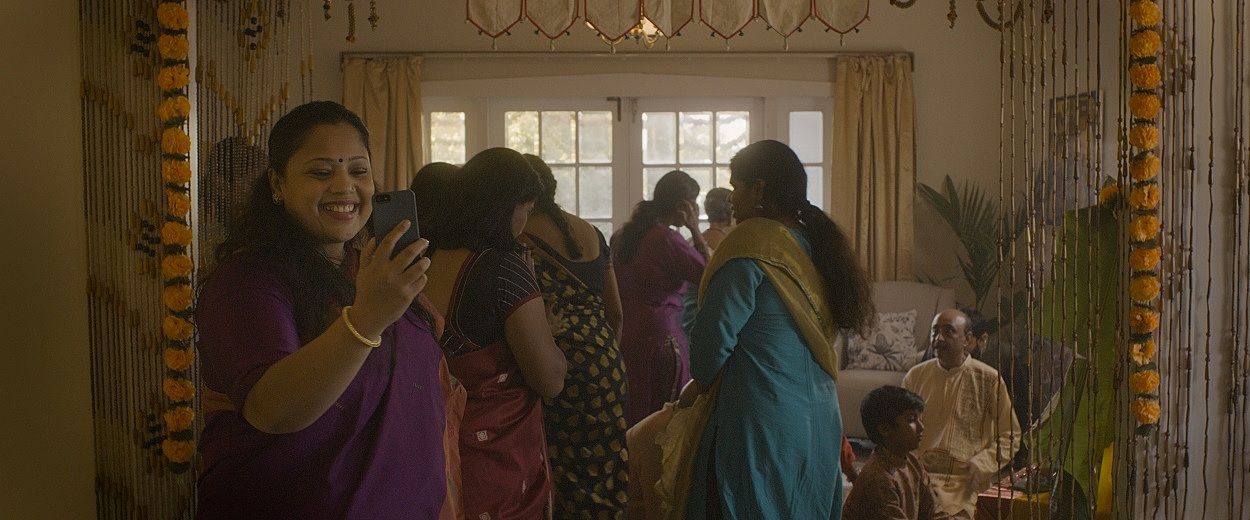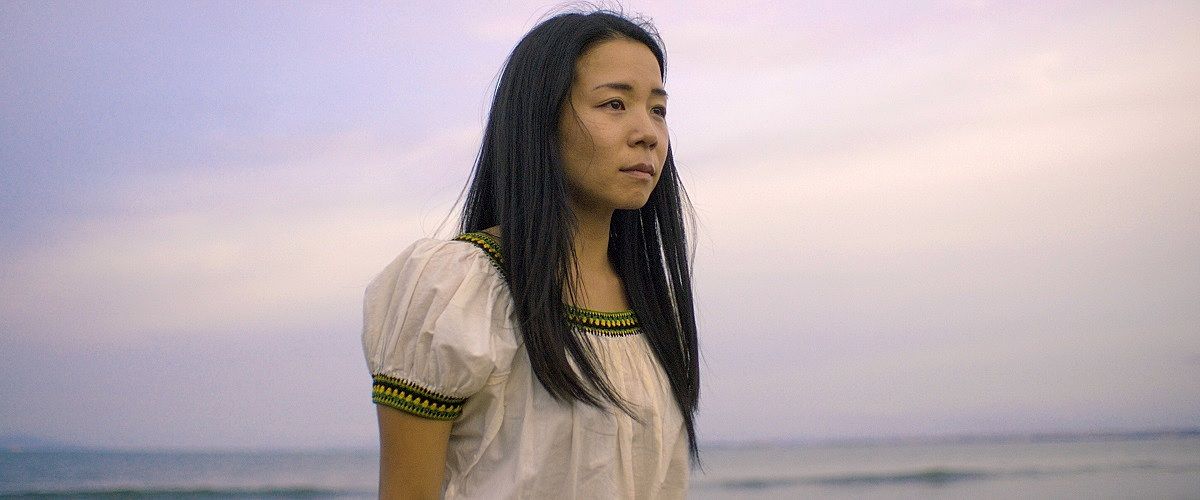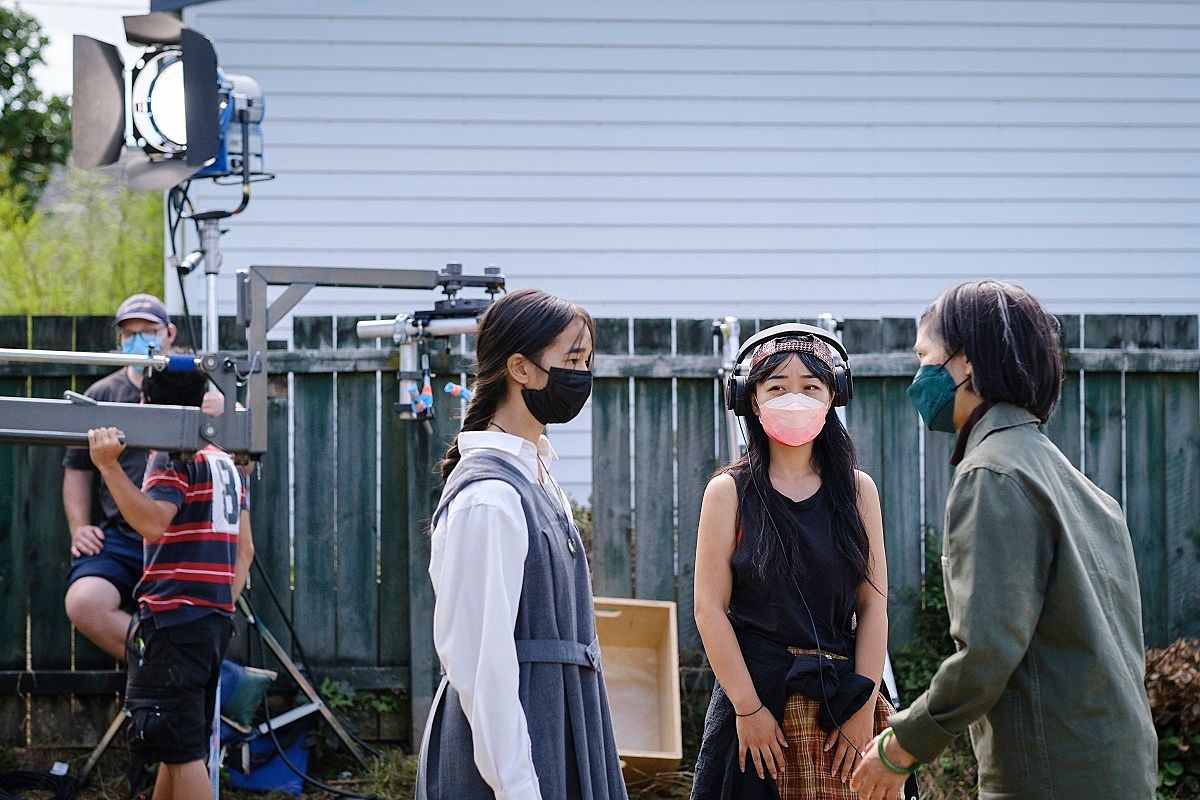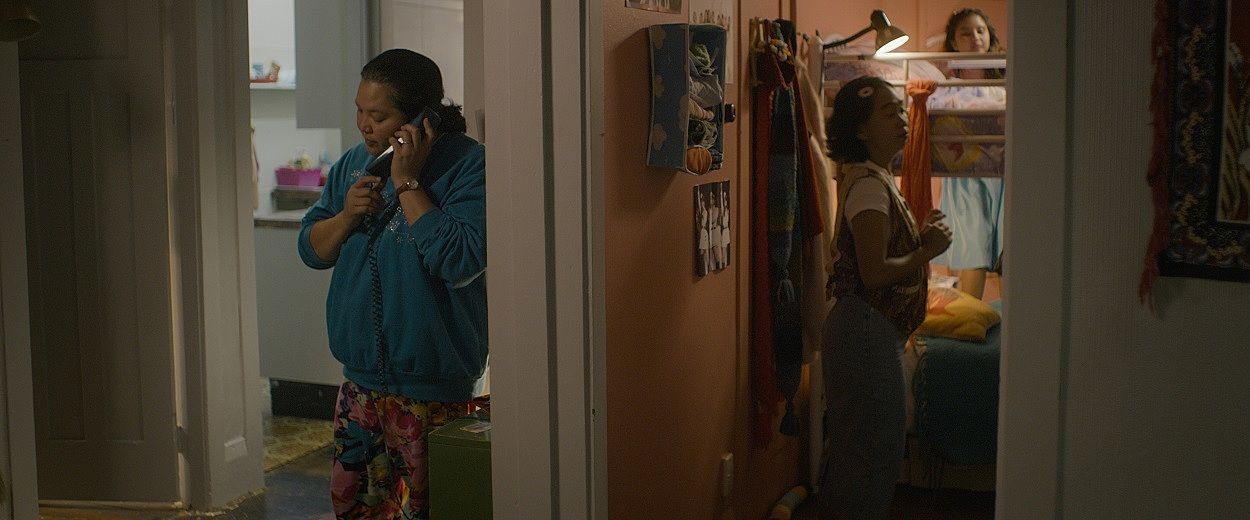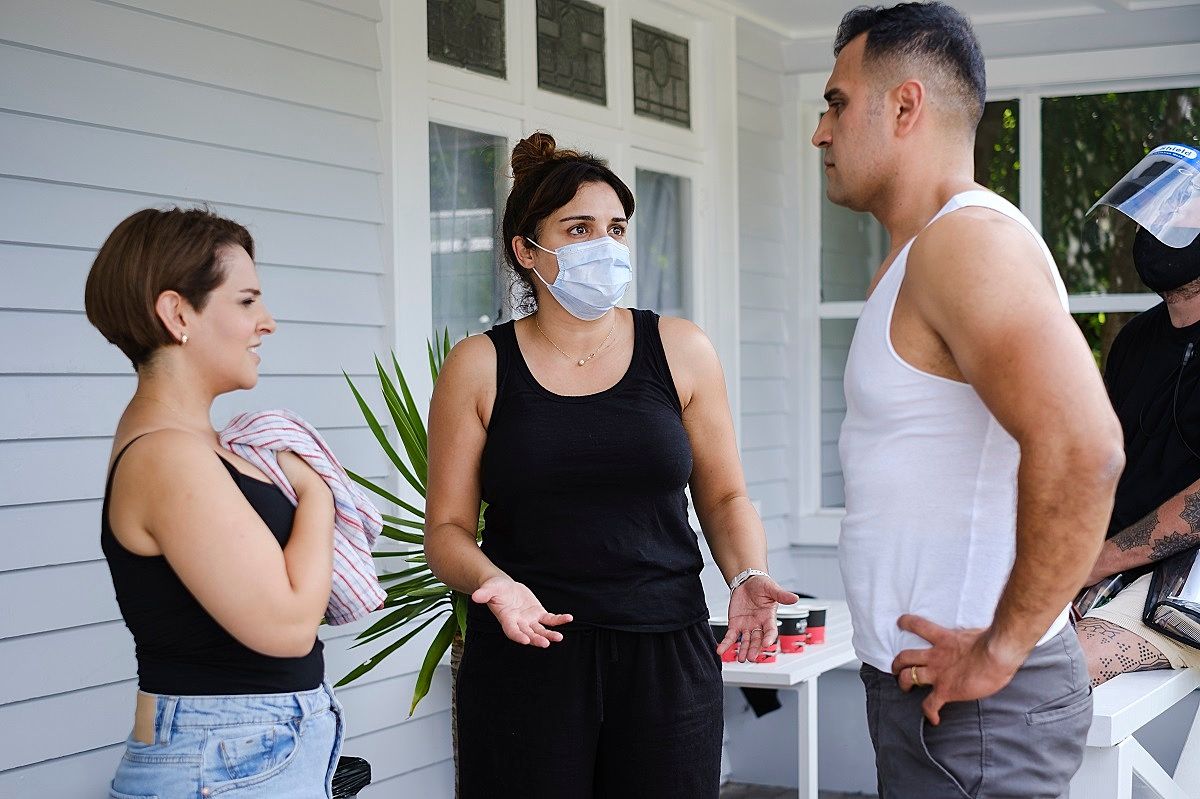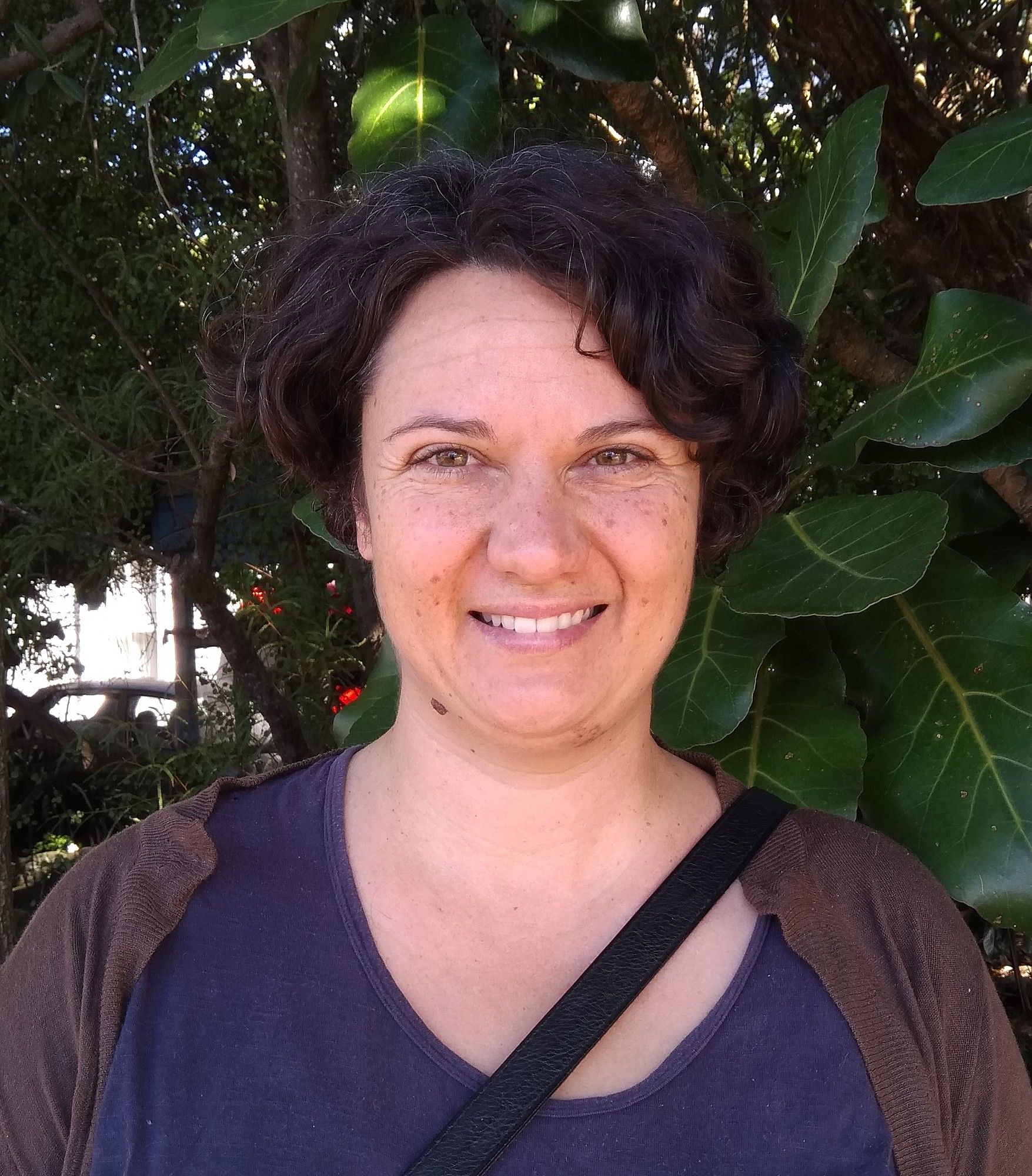The Slow Magic of Kāinga
Tulia Thompson reviews Kāinga, an anthology film by eight Pan-Asian writers and filmmakers, debuting at the NZIFF.
Kāinga works slow magic. It tells eight stories by eight Pan-Asian filmmakers, of the lives of eight Asian women. Each filmed in a single-shot, the shorts in the anthology span over 50 years, connected by the same location – a house – to explore themes of loss, belonging and home.
The film is the third in a series of anthology films by producers Kiel McNaughton (Ngāti Mahanga, Tainui) and Kerry Warkia, following Waru (2017) and Vai (2019). Here, they are joined by co-producer Shuchi Kothari, an acclaimed Indian writer and director with a long history of work exploring belonging and displacement.
Kāinga is immersive, and the stories are compelling and richly told. Among the eight featured shorts is the story of a Māori-Chinese teenager, Aho, mourning the loss of her grandfather; a Filipino nurse, Candy, wanting to talk to her pregnant daughter; and an Iranian mother, Parisa, who wants to return home.
Still from Kāinga, courtesy of NZIFF
The opening short, Aho, begins with glimpsed rows of carefully planted vegetables in a market garden, before the camera pans up over an old, green bungalow. Brave teenager Aho, played by compelling Mya Williamson, greets her arriving Aunt Ying with the news that she is too late, her father has already died. The whānau inside are distraught and sometimes angry, in their grief. When Aho’s nan, played by Rena Owen, directs caustic comments towards Ying, Aho diplomatically mistranslates them into words of acknowledgement, words that connect. Able to hold her own against a phenomenal supporting cast that also includes Miriama Smith and Kiel McNaughton, Mya Williamson is one to watch.
Directed by Julie Zhu and written by Mei-Lin Te Puea Hansen (Ngāti Mahanga), Māori-Chinese author of the play The Mooncake and the Kūmara, Aho captures the feeling that having a mixed cultural heritage is sometimes like having the superpower of walking between worlds. I love films written by playwrights – they know how to get to the heart of the conflict.
Aho captures the feeling that having a mixed cultural heritage is sometimes like having the superpower of walking between worlds
Director Julie Zhu with the actors. Photo by Jinki Cambronero, courtesy of BSAG Productions Ltd
Candy,the third short film in the series, tells the story of a Filipino nurse, played by Patricia Senocbit, who lives in the house with a group of other nurses. While the younger nurses are getting dressed up in their pretty party clothes to go clubbing for a birthday, Candy is trying to talk to her pregnant daughter back home.
I love the narrative point of Candy comforting her housemate, who fears she has made an error at work. It deftly speaks to the challenges faced by migrants as they create new families of circumstance, to fill the painful gaps left by absent relatives. My own experience of coming from a migrant family was having plenty of unrelated ‘aunties’, and yet we don’t often see non-nuclear families represented in mainstream media. In an age of global capitalism, people have to follow money. Global labour markets seep into our relationships; in this case, the immigration pathway for Filipino nurses to ease our nursing shortage. It feels important to reflect on the inner lives invisibilised by hospital uniforms.
Written by Mia Maramara and directed by Michelle Ang, Candy is layered with emotional subtlety. Director Michelle Ang is a great actor (she was Emmy nominated for her role as Alex in Fear the Walking Dead: Flight 462). She has brought her craft to her directing, with strong acting performances from her cast.
Still from Candy, courtesy of NZIFF
In the fifth short, Parisa, by writer and director Ghazaleh Golbakhsh, Masoumeh Hesam is an emotional powerhouse in the title role. The entire short film is an argument between Parisa and her husband, after she finds permanent residency documents in his bag. Parisa has been in Aotearoa for five years and wants to go home; her husband wants them to be safe, while she misses practising as an architect in Iran.
I loved the beautiful touches of realism in this short; the argument starts while they are getting ready for a party. Parisa is searching for a cream-coloured shirt to put over her singlet, and their small, curly-haired daughter wanders in mid-argument.
Writer/Director Ghazaleh Golbakhsh with the actors. Photo by Jinki Cambronero, courtesy of BSAG Productions Ltd.
With eight shorts tying together eight stories, the strength of Kāinga’s single-shot format is that it captures the minutiae of daily life, the richness we might otherwise pass over. Director of photography Drew Sturge lets the camera linger on the weight of wet clothes, the shiny sequined party dress, or the coarse orange curtains. It is visually captivating in its attention to detail.
As Kāinga is the third in the trilogy of anthology films made by production company Brown Sugar Apple Grunt, it’s worth reflecting on the impact these films have made in the context of the Aotearoa film industry. Behind the glamour of our few big-name directors (like Taika Waititi, Peter Jackson or Jane Campion), whose production budgets run from $30–150 million, it is notoriously difficult for new directors to break through. There’s a self-perpetuating cycle; filmmakers need funders, funders require filmmakers to have pre-existing film credits, so new filmmakers can’t get films made. The model of the anthology film has made Indigenous, POC and women-led filmmaking more possible; the format doesn’t have the same risks as a feature film, and means new writers and directors get film credits. We’ve seen already with Waru and Vai that the style can feed an ecosystem of creatives to go on and do great things.
It is notoriously difficult for new directors to break through
Watching Kāinga, you cannot but feel that these lives have been missing in action from our screens. The shorts speak deeply to personal migrant experiences and the history of racism in this country. The rich, significant inner lives of these women and girls are visible simply because the producers have made it possible for Pan-Asian women writers and directors to tell their own stories. Personally, I am hungry to see these writers and directors go on to produce their own feature films, so that we can experience their stories with the depth and complexity features allow.
To get there, we as a creative community need to buy tickets to show there is an audience prepared to value the stories of Asian creatives.
Kāinga is a gift. It is refreshing and vital.
Kāinga
Whānau Mārama New Zealand International Film Festival
Tāmaki Makaurau Auckland
29 July and 1 August
Header image courtesy of NZIFF. Still from Parvati, written by Shreya Gejji, and directed by Yamin Tun.
